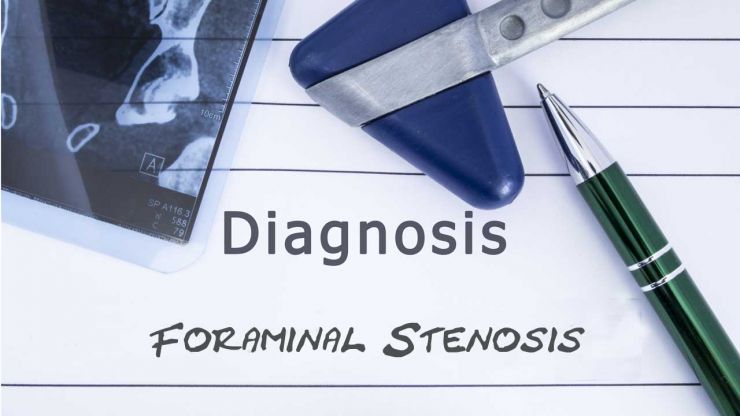Spinal Stenosis and Foraminal Stenosis

The article explains the characteristics of spinal stenosis and foraminal stenosis. A proper diagnosis of your condition requires the expertise of a spinal specialist.
Spinal Stenosis:
Spinal Stenosis, which translated from the Greek language, stenosis means a narrowing of a normally larger opening, the spinal canal or neuroforamen through which nerves exit the spinal column. This disorder is associated with aging. Some people are predisposed to spinal stenosis genetically or it may be caused by a congenital condition.
If the neuroforamen are partially or completely closed, the spinal nerves become compressed or trapped. The symptoms of spinal stenosis include numbness, weakness, and sensations of burning, tingling and pins and needles in the affected extremity such as the leg.
Spinal stenosis could be compared to wearing a pair of shoes that are a half size too small. The feet (nerves) react to the pressure by swelling (inflammation) that makes the shoes even tighter. The pain (nerve compression) can make walking difficult or impossible. Patients with spinal stenosis have found the pain eases when bending forward or sitting. Bending forward creates more space between the vertebrae that may temporarily relieve nerve compression.
Spinal stenosis may affect any part of the spine but is more prevalent in the lumbar spine. Lumbar spinal stenosis produces pain that may be felt in the buttocks, thighs, and calves when walking or standing. Cervical spinal stenosis affects the upper extremities and back. When severe, cervical spinal stenosis may affect the body from the neck down.
A CT scan or MRI is performed to confirm that the patient's symptoms are caused by spinal stenosis. When necessary a surgical procedure called a foraminotomy is performed to enlarge the size of the window to help relieve nerve compression.
Foraminal Stenosis:
Foraminal stenosis is similar to spinal stenosis but is singled out because it primarily affects one or more vertebral foramen. In a normal spine nerve roots have enough room to slip through the foramen. However, age and disease may affect the foramen by clogging the openings with debris that trap and compress nerves.
The symptoms of foraminal stenosis include numbness, weakness, and sensations of burning, tingling, and pins and needles in the affected extremity (e.g. leg). Not every stenosis is critical but if ignored, nerves may die that may cause a loss of function. Functional loss may involve the ability to feel (sensory) and move (motor).
If nonsurgical treatments are unsuccessful in relieving the patient's symptoms, surgery may become an option. The procedure is called a foraminotomy.
